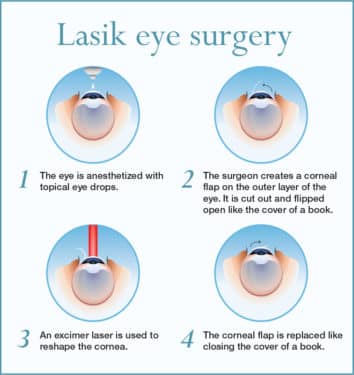Comparing Conventional And Modern Approaches To Treating Glaucoma
Comparing Conventional And Modern Approaches To Treating Glaucoma
Blog Article
Post Written By-Graves Mcfadden
Did you recognize that the evolution of glaucoma treatment methods spans centuries, including both typical treatments and innovative advancements? From old organic concoctions to sophisticated Minimally Invasive Glaucoma Surgical procedure methods, the spectrum of options is substantial. As you delve into the complexities of typical versus cutting-edge methods, you may uncover shocking understandings that test conventional viewpoints on treating this widespread eye problem.
Historic Development of Glaucoma Treatments
The historical development of glaucoma therapies dates back to old people where numerous solutions were made use of to manage the problem. In ancient Egypt, for example, therapies included a blend of honey, fat, and sour milk put on the eyes. Lasic Cost and Romans likewise added to early glaucoma treatments with a focus on topical applications and dietary interventions. Throughout history, diverse cultures developed one-of-a-kind methods to ease the symptoms of glaucoma, often rooted in herbal remedies and superstitious notions.
As time progressed, advancements in clinical understanding resulted in more methodical methods to treating glaucoma. In The Center Ages, Arabic scholars made significant payments by examining the composition of the eye and developing surgical methods to deal with eye conditions. These very early innovations laid the structure for contemporary glaucoma treatments that we've today. Comprehending the historical context of glaucoma treatments offers beneficial understandings into the continuous progression and improvement of medical techniques over the centuries.
Comparison of Standard Techniques
In contrasting conventional methods for treating glaucoma, think about the historical contexts and efficiency of various solutions.
Typical therapies for glaucoma have advanced over centuries, from ancient practices like making use of honey and red wine to a lot more current advancements such as eye declines and surgeries. Historically, solutions like the application of leeches or herbal mixtures were used to alleviate signs and symptoms, however their efficiency was limited.
As time proceeded, strategies like iridectomy, where a part of the iris is eliminated, came to be popular for reducing intraocular stress. Some typical approaches, like utilizing oral medications to lower eye stress, have actually stood the test of time and are still made use of today. Nonetheless, Halos After LASIK How Long include negative effects and might not be as efficient as modern-day choices.
It's necessary to evaluate the historic value of typical glaucoma therapies against their efficiency in the context of current medical innovations.
Assessment of Innovative Therapy Methods
Considering the developing landscape of glaucoma therapy, innovative strategies are changing the means this eye condition is managed.
One noteworthy advancement is minimally intrusive glaucoma surgical procedure (MIGS), which provides a less invasive alternative to conventional procedures. MIGS aims to lower intraocular stress by boosting the eye's all-natural drain system, leading to less problems and faster recovery times contrasted to traditional surgeries.
Furthermore, the growth of sustained-release drug delivery systems has offered a more reliable means to provide glaucoma medicine. These systems can launch drug slowly over a prolonged period, improving individual adherence and decreasing the frequency of eye declines.
Furthermore, emerging modern technologies like selective laser trabeculoplasty (SLT) use a non-invasive option for reducing intraocular pressure by targeting details cells in the eye's water drainage system.
Final thought
As you review the advancement of glaucoma treatments, you can see exactly how conventional approaches have actually paved the way for ingenious approaches to arise.
From old treatments to contemporary improvements, the trip of treating this complex eye condition has actually resembled a rollercoaster ride.
However with brand-new strategies like MIGS and sustained-release drug shipment, the future looks brighter than ever for clients seeking reliable and less intrusive remedies.
